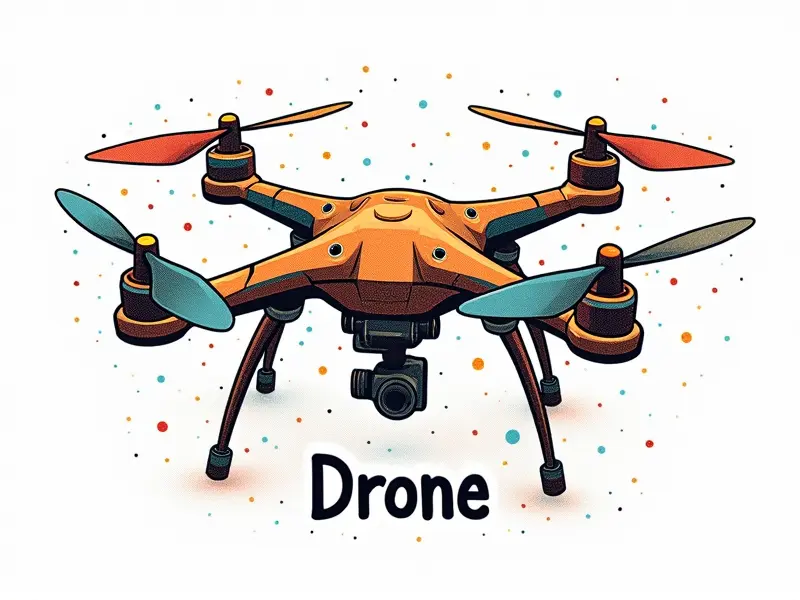Can drones fly in thunderstorms?

Can Drones Fly Safely in Thunderstorms?
Flying drones during thunderstorms poses significant risks to both the operator and the drone itself. The turbulent weather conditions can lead to unexpected hazards, such as lightning strikes, strong winds, and heavy rain. These elements not only endanger the drone but also compromise the safety of anyone nearby.
Flying FPV Racing Drones in Bad Weather
First-person view (FPV) racing drones are designed for high-speed maneuverability and precision flying. However, attempting to fly these drones during thunderstorms is extremely dangerous. The visibility is severely reduced due to rain, making it nearly impossible to control the drone effectively.
Risks of Flying Drones in Severe Weather
- Lightning Strikes: Thunderstorms often come with lightning, which can cause severe damage or even destroy a drone instantly upon impact. The risk of electrical failure is high due to the powerful currents.
- Strong Winds and Gusts: High winds can easily knock drones off course, leading to loss of control and potential crashes. This becomes particularly dangerous when flying over populated areas or near obstacles.
- Rain and Visibility Issues: Heavy rain reduces visibility significantly, making it difficult for pilots to monitor their drone's position accurately. Water accumulation on the drone can also affect its aerodynamics and stability.
Is It Safe to Fly RC Helicopters in Storms?
Flying remote-controlled (RC) helicopters during thunderstorms is highly unsafe due to similar risks as those for other drones. The added complexity of helicopter flight dynamics makes it even more challenging to maintain control under adverse weather conditions.
Drone Safety Tips for Thunderstorm Conditions
- Avoid Flying During Storms: The safest approach is to avoid flying any drone during thunderstorms. Wait until the storm has passed and conditions are stable before resuming flight operations.
- Stay Informed About Weather Forecasts: Regularly check weather forecasts for your area to ensure you are aware of impending storms well in advance, allowing you ample time to secure your drone.
- Use Indoor Flying Areas: If possible, use indoor flying areas equipped with protective screens or nets. This ensures that your drone remains safe from the elements while still providing an opportunity for practice and testing.
- Follow Manufacturer Guidelines: Always adhere to the manufacturer's guidelines regarding environmental conditions suitable for drone operation. Most manufacturers recommend avoiding extreme weather scenarios like thunderstorms.
Should You Avoid Flying Drones in Storms?
Absolutely yes, flying drones during storms is highly discouraged due to the numerous risks involved. The potential damage and safety hazards far outweigh any benefits or curiosity about drone performance under such conditions.
Can RC Quadcopters Handle Thunderstorms?
While some high-end RC quadcopters may have better durability than others, no quadcopter is designed to withstand the harsh conditions of a thunderstorm. The risks associated with flying in these environments are too great and can result in significant damage or loss.
Are Thunderstorms Too Risky for Drone Flight?
The answer unequivocally lies in the affirmative; thunderstorms present an unacceptable level of risk for drone flight. The combination of lightning, high winds, and poor visibility creates a dangerous environment that poses severe threats to both drones and their operators.
Risks of Flying RC Helicopters in Thunderstorms
For RC helicopters specifically, the risks are even more pronounced due to their complex flight mechanisms. Loss of control can result in rapid descent or erratic movements, increasing the likelihood of crashes and structural damage.
How Storms Affect RC Quadcopter Flight
- Electrical Damage: Lightning strikes pose a critical risk to quadcopters, as they can cause immediate electrical failure or permanent damage to sensitive electronics.
- Wind Disruption: Strong winds and gusts can destabilize the flight path of quadcopters, making it difficult for pilots to maintain control over their drones.
- Rain Impact: Rain accumulation on quadcopter components can affect aerodynamics and stability, leading to unpredictable behavior during flight.
Stormy Skies: Is It Safe for RC Airplanes?
Flying remote-controlled airplanes in stormy conditions is equally perilous. The risks of electrical damage from lightning, wind disruption, and reduced visibility make it unsafe to operate any type of drone during thunderstorms.
Conclusion
In summary, flying drones—including FPV racing drones, RC helicopters, quadcopters, and airplanes—during thunderstorms is extremely dangerous. The risks associated with electrical damage, wind disruption, and poor visibility far outweigh any potential benefits of operating in such conditions. Always prioritize safety by avoiding drone flights during storms and adhering to manufacturer guidelines regarding environmental suitability.

